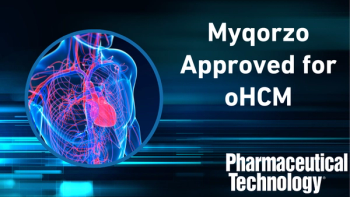
- Pharmaceutical Technology-07-02-2017
- Volume 41
- Issue 7
Perspective: Cost Constraints Hinder Innovation
Cheaper drugs are good for consumers, but cost restrictions limit drug company incentives to modernize facilities.
While industry advances have made medicines safer, cost constraints have hindered innovation, according to Susan Schniepp, distinguished fellow at Regulatory Compliance Associates.
Pharma industry advancements
PharmTech: During your 38 years in the pharmaceutical industry, how has it evolved?
Schniepp: The industry has changed in many ways, and in many ways it has remained the same. When I started in 1979, there was a lot of focus on data integrity, complete investigations, and risk-based decisions. In 1993, we all read and absorbed the Barr Decision and rewrote the rules on investigations into out-of-specification (OOS) results. In the past year or two, we have seen the reemergence of these issues. FDA, the Medicines and Healthcare products Regulatory Agency [in the United Kingdom], and other regulatory agencies have published new guidances on data integrity, and trade organizations have formed taskforces to study the issues. In addition, one of the top FDA 483 observations for both the drug and device industries has to do with incomplete investigations. In many ways, it seems like the industry has come full circle.
PharmTech: What advances have been made?
Schniepp: There have been a number of advances in the biotech and device industries. I think the emergence of 3-D printing will become critical in advancing the industry towards creating personalized medicines and for some of the more routine surgical procedures like heart valve replacements.
PharmTech: What are the top three innovations that have changed the industry the most over the past 40 years and why?
Schniepp: Medicines are safer due to the reduced exposure of the human to the product because of barrier technology. Dissolution testing, high-performance liquid chromatography, ultra high-pressure liquid chromatography, and rapid microbiological method advancements allow the industry to obtain more precise test results faster for determining the suitability of the product for release. The emergence of the biotechnology industry and the new manufacturing needed to produce these products has been the key in opening the pathway to achieving personalized medicines.
PharmTech: What were some factors that hindered advances in the industry?
Schniepp: There has been a switch in the industry in the past 40 years. The emergence of the generic industry, contract manufacturing organizations, and virtual companies has, in some ways, hindered advancements. While they have been good for consumers in these sectors, they have inadvertently hindered advancements because they need to be cost conscious and may be unable to risk revising or updating their manufacturing facilities or processes to meet today’s expectations.
PharmTech: How have regulations and standards advanced or hindered advances?
Schniepp: The inability of the regulators to harmonize on post-approval changes has hindered advancements. The timelines for approval and the information required for approval varies around the world. In some cases, it may take up to five years for a company to globally implement a critical change to its product. The inability or unwillingness of the pharmacopeias to harmonize their monographs has also hindered the industry in its ability to offer the same medicine around the world. When the testing criteria in the pharmacopeias are different around the world, companies must meet and test to these different criteria. This costs time and money and is ultimately insignificant when it comes to judging the quality of medicines.
The future of Pharma
PharmTech: What do you foresee for the next 10 years in pharma innovations, regulations, and/or markets?
Schniepp: I think the area of personalized medicine will continue to grow, and surgical advancements will be made because of the emergence of 3-D printing. I think manufacturing facilities will shrink in size and companies will manufacture small batches as opposed to the current large-batch manufacturing being done today.
Susan Schniepp has been a member of Pharmaceutical Technology’s Editorial Advisory Board since 2007.
Article Details
Pharmaceutical Technology
Vol. 41, No. 7
Page: 71
Citation
When referring to this article, please cite it as PharmTech, “Perspective: Cost Constraints Hinder Innovation,” Pharmaceutical Technology 41 (7) 2017.
Articles in this issue
over 8 years ago
Packaging Improves Medication Adherenceover 8 years ago
The New World of Biopharmaceutical Manufacturingover 8 years ago
Forty Years of Drug Product Manufacturing Advancesover 8 years ago
Advances in Analytical Testing Tools for the Bio/Pharma Industryover 8 years ago
Ribbon Blenders for Specialty Applicationsover 8 years ago
Coating Module Supports Easy Module Exchangeover 8 years ago
Dissolution Tester Eliminates Water Bathover 8 years ago
Bioreactor Family Includes Single-Use Bagsover 8 years ago
FDA Continues to Promote Quality Drug ProductionNewsletter
Get the essential updates shaping the future of pharma manufacturing and compliance—subscribe today to Pharmaceutical Technology and never miss a breakthrough.




